
This is a comprehensive tutorial on Exponential and Logarithmic Functions
- Subject:
- Mathematics
- Material Type:
- Textbook
- Provider:
- Interactive Mathematics
- Date Added:
- 08/07/2023

This is a comprehensive tutorial on Exponential and Logarithmic Functions

College-level electrical engineering course highlighting numerical analysis for engineers. This course introduces students to the formulation, methodology, and techniques for numerical solution of engineering problems. Course features include suggested readings, lecture notes, assignment problems, and exams with solutions.
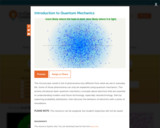
The microscopic world is full of phenomena very different from what we see in everyday life. Some of those phenomena can only be explained using quantum mechanics. This activity introduces basic quantum mechanics concepts about electrons that are essential to understanding modern and future technology, especially nanotechnology. Start by exploring probability distribution, then discover the behavior of electrons with a series of simulations.

This activity is designed to provide qualitative understanding of the Work-Energy Theorem. Students are expected to have read introductory material regarding the theorem, and are tested on this with a short online quiz prior to class. After a brief discussion a "warm-up" demonstration is conducted with student participation. A question is then posed regarding the height a "Hopper Popper" will reach if launched from a thumb instead of a hard flat surface. After initial responses are presented, discussion groups are formed to achieve consensus and provide justification of conclusions. This is followed by a confirming demonstration with surprising results.
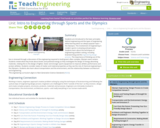
Students are introduced to the basic principles behind engineering and the types of engineering while learning about a popular topic - the Olympics. The involvement of engineering in modern sports is amazing and pervasive. Students learn about the techniques of engineering problem solving, including brainstorming and the engineering design process. The importance of thinking out of the box is stressed through a discussion of the engineering required to build grand, often complex, Olympic event centers. Students review what they know about kinetic and potential energy as they investigate the design of energy-absorbing materials, relating this to the design of lighter, faster and stronger sporting equipment to improve athletic performance and protect athletes. Students consider states of matter and material properties as they see the role of chemical engineering in the Olympics. Students also learn about transportation and the environment, the relationship between architecture and environment, and the relationship between architecture and engineering.

This is a short unit (including hands on activities) to expand our study of how light travels and how it behaves when it hits an object.
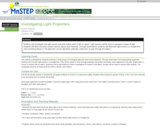
This activity is lab oriented where students will observe that light travels in a straight line and is reflected, redirected, absorbed, or passes through objects.
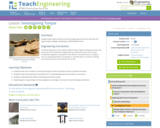
This lesson focuses on torsion as a force acting upon structures. Students will have the opportunity to design something to withstand this force.
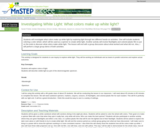
This activity is an investigation of what colors make up white light. Students will explore through two different hands-on activities.

In this video segment adapted from ZOOM, the cast builds a suspension bridge from a couple of chairs, some cardboard, and rope.

This article highlights seven science lessons that teach elementary students about seasonal change. Suggestions for integrating literacy and science include two lessons that use informational text and cause and effect relationships.
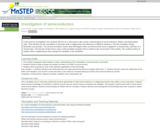
This investigation involves a web quest and simulation to help students learn about the make-up and functioning of semiconductors as well as some applications. They will learn about p and n type materials, the pn junction, and what happens when an outside EMF source is added.
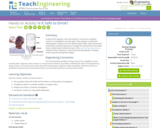
In this activity, students conduct an investigation to purify water. They engineer a method for cleaning water, discover the most effective way to filter water, and practice conducting a scientific experiment. Through this activity and its associated lesson, student teams follow the steps of the engineering design process related to water treatment, as done by practicing engineers, including constructing and testing their designs.
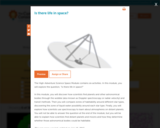
In this investigation, students will explore the question: Can there be life outside of Earth? Students will use planet hunting models to discover how scientists find new planets and perform simulated spectroscopic measurements to determine if the chemical requirements for life are present.

This article describes how primary school teachers and their school technology specialist use classroom blogging to engage children in reading and writing.
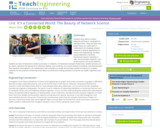
Students learn about complex networks and how to use graphs to represent them. They also learn that graph theory is a useful part of mathematics for studying complex networks in diverse applications of science and engineering, including neural networks in the brain, biochemical reaction networks in cells, communication networks, such as the internet, and social networks. Students are also introduced to random processes on networks. An illustrative example shows how a random process can be used to represent the spread of an infectious disease, such as the flu, on a social network of students, and demonstrates how scientists and engineers use mathematics and computers to model and simulate random processes on complex networks for the purposes of learning more about our world and creating solutions to improve our health, happiness and safety.
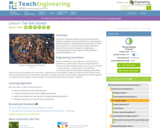
This lesson will introduce students to environmental issues. Students will recognize environmental opinions and perspective, which will help them define themselves and others as either preservationists or conservationists. Students also learn about the importance of teamwork in engineering.
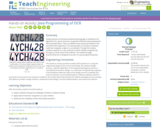
Student groups use the Java programming language to implement the algorithms for optical character recognition (OCR) that they developed in the associated lesson. They use different Java classes (provided) to test and refine their algorithms. The ultimate goal is to produce computer code that recognizes a digit on a scoreboard. Through this activity, students experience a very small part of what software engineers go through to create robust OCR methods. This software design lesson/activity set is designed to be part of a Java programming class.
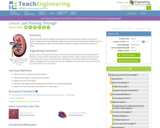
This lesson helps students explore the functions of the kidney and its place in the urinary system. Students learn how engineers design instruments to help people when kidneys are not functioning properly or when environmental conditions change, such as kidney function in space.
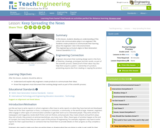
In this lesson, students develop an understanding of the critical role communication plays in an engineer's life. Students create products to communicate their learning about the engineering role in the environment.